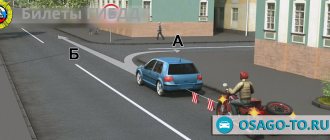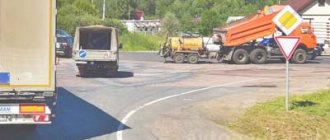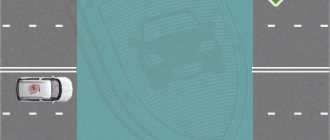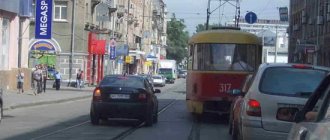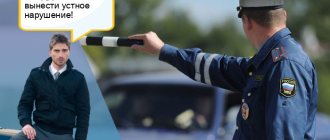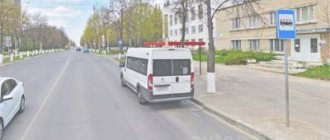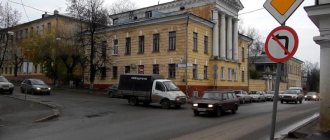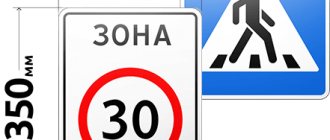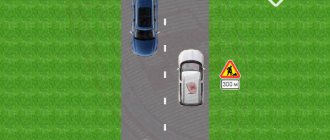What is a reversal
According to the interpretation specified in the traffic rules, a turn is a maneuver, as a result of which the car completely changes the direction of its movement. Moreover, this maneuver can be performed both at the intersection and outside it. A prerequisite for turning around must be good visibility of the road in both directions. In addition, the vehicle making the U-turn must also be within sight of other road users.
Where U-turn is prohibited
In accordance with paragraph 8.11 of the traffic rules, a ban on the right to turn a car is provided for the following areas:
- At pedestrian crossings;
- On bridges and tunnels;
- On overpasses, overpasses, and also under them;
- At railway crossings;
- Where in any direction of movement the roadway is visible for no more than 100 meters;
- At public transport stops.
These places where U-turns are prohibited are by no means random. Making a U-turn on such road sections poses a serious danger both to the driver and passengers of the vehicle making the U-turn, as well as to passengers of other vehicles, as well as road pedestrians.
Another important nuance: when turning, you should never cross the double solid marking line. If it is applied to the road surface, the driver must choose another place to turn around.
You also need to take into account that making a U-turn is strictly prohibited in those places where the “U-turn is prohibited” sign is installed.
Most often, this sign is installed by road services in front of those intersections where the movement of vehicles is difficult or such a maneuver may create a danger for other road users or pedestrians.
By the way, many motorists believe that the “No U-turn” sign also restricts other maneuvers. Actually this is not true. Turning left and driving in a straight line is not prohibited for the driver.
This sign can be installed not only on the right side of the road, but also on the left, as well as on the dividing strip. This is done so that the driver is more vigilant and does not make a U-turn in places where there is a danger for all road users.
In addition to installing a sign prohibiting a U-turn, an additional sign can be installed in conjunction with it, which determines at what distance a U-turn is prohibited.
Also, it is necessary to understand that this sign does not apply to public transport, since it may have a clearly defined route according to which it must move.
How to turn left at an intersection?
This is the most difficult turn of the vehicle, where you need to be especially careful.
There are three main stages:
- Preparing to turn;
- Turn left;
- Exiting the turn.
Turn left at an intersection with a traffic light
Basic rules for turning at an intersection with a traffic light:
| Did not find an answer to your question? Call a lawyer! Moscow: +7 (499) 110-89-42 St. Petersburg: +7 (812) 385-56-34 Russia: +7 (499) 755-96-84 |
- If there is oncoming traffic, it is necessary to drive closer to the center of the intersection, along the line of the road along which we are moving;
- You need to choose a position so that at the intersection your car can be passed by drivers moving straight or to the right;
- Before reaching two meters from the axis of the road being crossed , you must stop. This will help roll out for the turning maneuver. This technique is typical for cars with a mechanical transmission system and a clutch pedal. If there is mechanical clutch, then you need to let the oncoming car pass and start moving with straight wheels at the distance left for this. As soon as the oncoming car has passed, you need to start turning the steering wheel to the left. By moving and turning the steering wheel at the same time, you can avoid an incident when the car simply stalls at an intersection. When making a left turn, do not forget to stop near the pedestrian crossing and let pedestrians pass;
- The center of the road is the intersection of the axes.
Turn left at an intersection without a traffic light
When turning left at an intersection without a traffic light, you must follow the following rules:
- When turning left, you must allow all traffic moving straight from the opposite direction or turning right to pass;
- Only now can you maneuver and turn the car to the left.
Be extremely careful, this is the most difficult turn and requires not only attention and skill, so as not to become involved in an accident. By following all the algorithms for correct movement when turning left, you will save not only your life, but also the drivers of oncoming vehicles.
How to turn left at an intersection if there are tram tracks?
Before turning left, first of all, you need to let the tram pass . Only then give way to the cars that are located on the right. Then let vehicles go straight and turn right.
If turning left is prohibited, is a U-turn allowed?
Such movement is provided for by sign 3.23. Turning to the left is prohibited.
This sign prohibits cars from turning left, but allows them to make a U-turn. The sign does not provide for its impact on cars that move along their previously adopted routes. The sign is valid on the roadway where roads intersect and in other areas where it is located.
Where and how is a U-turn allowed?
The current version of the traffic rules states that U-turns are allowed both at intersections and free sections of the road outside intersections.
If there is no dividing strip on the roadway, you can make a U-turn in those places where there is no continuous marking line. On a road with several lanes in each direction, you need to find a special place to turn around. It is usually designated by 6.3.1 or 6.3.2. If these signs are not installed, the driver can navigate along the broken road marking line.
Dear reader! Didn't receive an answer to your question? Our expert lawyers work for you. It's absolutely free!
- Moscow ext 152
- St. Petersburg ext 152
- All regions ext 132 (Toll free)
As for the procedure for turning around at an intersection, this maneuver must be performed taking into account the requirements of Chapter 13 of the current edition of the traffic rules. It is she who reveals the order in which movement occurs at the intersection. It is important to understand that a U-turn at an intersection must be made only from the far left lane
In a situation where the turning maneuver must be performed not at an intersection, the driver must refer to rule 8.8. This clause specifies that a turn must be made from the extreme left lane, and if the road also contains tram tracks running in the middle of the road, then the turn must be made from the rails running in the same direction.
In addition, we must not forget that the driver of a vehicle making a U-turn must allow all oncoming vehicles to pass. If the turn is made through tram tracks, you will also need to pass passing and oncoming trams.
In some cases, the width of the roadway may not be sufficient to perform a classic U-turn from the leftmost lane. Thus, the vehicle will interfere with those cars that need to give way. For such situations, clause 8.8 provides an exception, thanks to which it is allowed to start a turn not from the extreme left position, but from the extreme right or from the right shoulder. In this case, the driver must give way to all passing and oncoming vehicles. The driver must wait for the appropriate moment and only then make a U-turn. Thus, no interference will be created for other traffic participants and the turn will be completed successfully.
A similar turning option is allowed for various long vehicles, the dimensions of which do not make it possible to make a turn from the leftmost lane.
But none of the traffic rules gives you the right to make a U-turn from the middle of the road. Therefore, when approaching an intersection, if it is necessary to make a U-turn, the driver of the car must take the extreme left position on the road. If the turn is not made at an intersection, then you need to take one of the two extreme positions on the roadway.
If the driver needs to make a U-turn when approaching a roundabout, then this maneuver is allowed only after the middle of the intersection has been detoured.
Information signs
Information signs:
- Sign 6.1. Speed reduction and its limitations.
- Sign 6.2. The speed is acceptable for movement.
- Sign 6.3.1. Turnaround area.
- Sign 6.3.2. Turnaround area.
- Sign 6.4. Parking area.
- Sign 6.5. Emergency stop line.
- Sign 6.6. Indication of underground pedestrian crossing.
- Sign 6.7. Ground lines for pedestrian crossing.
- Sign 6.8.1, 6.8.2 and 6.8.3. Identification of a dead end.
- Sign 6.9.1. Temporary indicator of directions.
- Sign 6.9.3. Movement algorithm.
- Sign 6.10.1. Directions indicator. The names of the points and the distances between them are indicated here.
- Sign 6.10.2. Indication of movement.
- Sign 6.11. Name of the territory.
- Sign 6.12. An indicator of the distance between points.
- Sign 6.14.1. Numbering of the route vehicle.
- Sign 6.15.1. Instructions for traveling on freight transport.
- Sign 6.16. Instructions for stopping the vehicle. Indicated by a special stripe.
- Sign 6.17. Detour plan.
- Sign 6.19.1. Direction to move to the next road to travel.
- Sign 6.19.2. Sign to move to the next road to travel.
What signs prohibit turning a car?
The main sign that prohibits a U-turn maneuver is the “No U-turn” sign. It consists of a black arrow crossed out with a red stripe on a white background with a red border. The “No U-Turn” sign itself is round in shape.
Most often, this sign is installed at intersections and prohibits a U-turn maneuver at this particular intersection. At all subsequent intersections, it is possible to make a U-turn if a prohibition sign is not installed in front of them.
In addition to the above sign, there is a whole series of them prohibiting making a U-turn in a certain area of traffic. Thus, the list of road signs that do not provide for the ability to make a U-turn includes:
- Those that indicate the presence of a pedestrian crossing;
- Notifying about approaching the entrance to the tunnel;
- Indicating a railway crossing located ahead;
- Those that notify that there is poor visibility on the road ahead;
- Informing about the location of vehicle stops;
- Signs that indicate continuous single or double markings applied.
But there are no separate special signs that would allow a U-turn on a certain section of the road. There are other signs indicating permissible directions of movement, but the “Turning is allowed” sign is not in the traffic rules.
